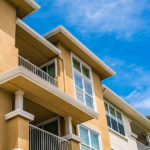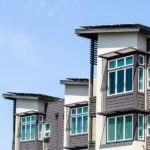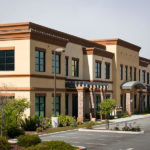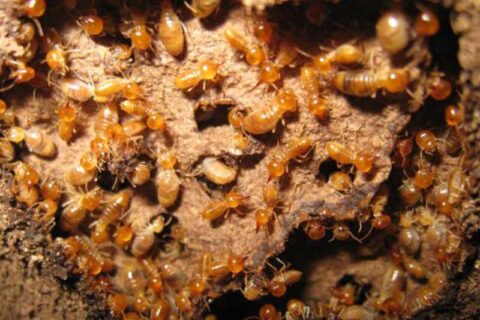Summer Is Here: Why Bay Area Termites Might Choose To Move In With You NOW!
The San Francisco Bay Area is well known for its cool summers and Mediterranean-like weather. In the summertime, the Bay Area is naturally cooled by cold fronts and often creates fog because of the warmer water temperatures. While this can be great for your energy bills, there could be a silent intruder that is also benefiting from the cooler summers both inside and outside your home: termites.
It is important to understand that the seasonal weather in the Bay Area helps termites thrive and their colonies to expand. Termites do not discriminate when it comes to food. All they want is wood or any other type of cellulose-based material like paper, drywall, cardboard, and so on.
As a result, termites swarm at different times throughout the year, with the summer months typically being the most active. Since many species are more active in the summertime, not to mention we tend to spend more time outdoors, it makes finding termite locations and infestations easier.
Let’s take a look at the different termite species that call the Bay Area home and when these species normally swarm.
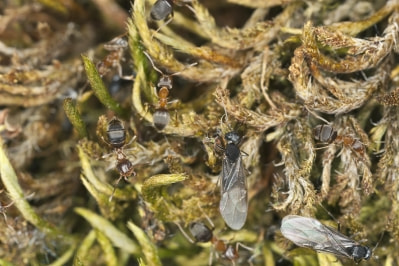
Western Subterranean Termites
Western subterranean termites will swarm after the rainy season tapers off in April. These swarmers are easy to spot because they like to swarm in the daylight hours. You might notice thick black “clouds” of insects flying around and think they are flying ants. Ants also swarm in the springtime after the rainy season.
Desert Subterranean Termites
The desert subterranean species will swarm anytime from July through September. They typically swarm in the evening hours after a rainy summer day. You might notice them flying around outdoor lights or, if they are in the house, flying into the TV screen or overhead lights.
Arid-Land Subterranean Termites
The arid-land species is another subterranean termite you need to worry about. This species can swarm in the fall before the start of the rainy season in November. Yet, this species will also swarm in the late winter and early spring after the rainy season ends. You can spot these swarmers during daylight hours, and they could be intermixed with the western subterranean swarms.
Desert Drywood Termites
Desert Drywood Termites like to swarm during the warmer months. However, they dislike swarming in direct sunlight and swarm at night. Swarms can start as early as June and go through September. Just like the desert subterranean cousins, they are drawn to lights.
Western Drywood Termites
Western Drywood Termites tend to swarm in late summer and into the fall months from July through September. Prior to swarming, there has to be a period of rain, so, if it is dry all summer long, they might not swarm until after a good shower in the fall.
Nevada Dampwood Termites
The Nevada dampwood termite species have migrated into California. This species can survive at the higher elevations as well as coastal areas like the Bay Area. This species will swarm in the springtime at higher elevations and in the summer to early fall along the coast. You can spot swarmers at dusk as the sun is setting.
Pacific Dampwood Termites
The Pacific dampwood termite species prefers coastal areas but has been found at higher elevations. They also prefer to swarm at dusk as the sun is setting. They normally swarm anytime from August through October.
Formosan Termites
Swarms can occur anytime from May through September, but they can also occur at other times of the year. Swarmers are normally spotted in the early evening right after the sunsets.
As evident, many species of termites are very active during the summer months, which threatens your home. Swarms are how termites expand their colonies and establish new ones. It is not uncommon for a primary colony to support one or more sub-colonies until they are sufficiently populated.
What Is the Difference Between Termite Species?
There are a few differences between the various termite species that determine how colonies are established and maintained. Knowing these differences can help you look for signs of termite activity around your home and why it is important to call in a termite inspector for further help.
- Subterranean Termites: All species live and build their colonies on the ground. They go out and forage for sources of wood for food. In order to protect and shield themselves from direct sunlight, the workers will build mud-like tubes. If you notice these on the sides of your home, garage, or other areas around the home, you probably have an infestation.
- Drywood Termites: These species of termites do not have to live underground in order to thrive. Rather, they build their colonies directly inside the wood they are eating. They build tunnels from the central location where the queen is located. Since they can survive above ground, they can be a major headache for homeowners if they get into their Bay Area homes.
- Dampwood Termites: As the species name suggests, these termites prefer damp wood. In most cases, they remain outdoors. However, if your home has a water leak or roof leak that is causing wood to become damp and retain moisture, they can get inside the home.
- Formosan Termites: This is an invasive species that is more destructive than other termite species. They typically have larger colony sizes. They were first discovered in California in the San Diego and Los Angeles areas and have spread throughout the state. The concern with Formosan termites is they are adaptable and build colonies anywhere conditions are favorable, both above and below ground.
Why Termite “Seasons” Are a Myth
You may have heard there are specific “seasons” for termites, but this is a myth. This myth started because termites are easy to find and discover when they swarm—although, as we mentioned, termite species swarm at various times throughout the year, so there is no set “season.”
Furthermore, termites can swarm indoors at any time of the year, as long as the conditions are right. There have been cases where subterranean termites have swarmed in the middle of winter!
Another reason there are no set “seasons” is that all species of termites are active 24/7. They constantly work at eating away and destroying any wood they have found as a food source, including your home.
How Much of a Risk Are Termites in the Bay Area?
Contrary to what you may think or what others have told you because the weather in the Bay Area tends to be milder than other parts of the state, termites are a major threat to your home. California is among the eight termite high-risk states, along with Texas, Florida, Louisiana, Alabama, Mississippi, Georgia, and South Carolina.
If you do not have a termite exterminator perform regular inspections and use preventative treatments, it is only a matter of time before you are faced with an infestation. Keep in mind, damage to your home caused by termite infestations is NOT covered under your homeowner’s insurance policy.
DIY Tips Before Calling a Termite Company
If you notice any of the following around your home, you have a termite emergency:
- Swarmers
- Discarded Pairs of Wings
- Small Piles of Sawdust Around Baseboards and Window Ledges
- Mud-Like Tubes on Your Home
- Pin-Like Holes in Drywall and Wood
Prior to calling a termite company to schedule a home inspection, there are a few things you should and should not do.
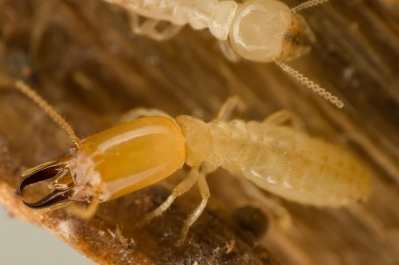
- Do schedule an inspection ASAP. The key to controlling the extent of damages caused by termites is to get an inspection performed. There are various treatments like an orange oil termite treatment, although what treatments you require will depend on where the termites are located, the extent of the infestation, and the species.
- Do keep pets and children out of the infested area. It is a good idea to prevent children and pets from going near termites. While the workers do not bite, if they feel threatened they can use their pincers to defend themselves and pinch.
- Do make note of where you noticed termite activity. For example, you may have noticed swarmers in a particular area of your yard.
- Do not remove the source of the wood. Removing the source of the termites’ food is not a good idea. This will not get rid of the termites but only force them to find a new source of food. For instance, if you discover termites outside in wooden mulch and remove it, they could decide to move into your home instead.
- Do not disturb termite colonies. One mistake homeowners make is to start digging up their yards looking for subterranean termite colonies. Disturbing colonies can cause termites to burrow deeper into the ground or cause them to move.
Even if you have not noticed any signs of termite activity or swarms around your Bay Area home, it does not mean they are not present. The only way to be 100% sure your home is not infested and to keep termite colonies outdoors under control is with regular termites inspections from the termite exterminator experts at MightyMite Termite Services.
For further questions and information about termites, or to schedule an inspection of your Bay Area home, call us at 408-377-3761 now!

